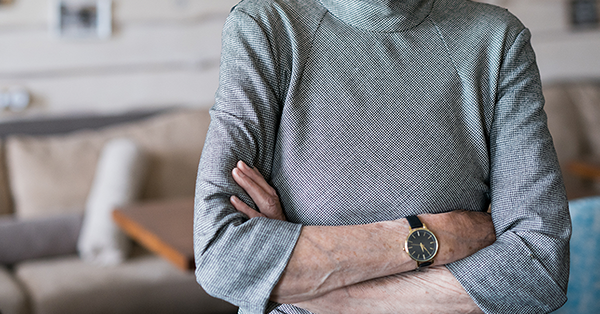I Have Trouble Hearing Because We Are All Wearing Masks! – Live Captioning for Better Communication
Whether you have a hearing loss or not, watching the face

By: admin | November 12, 2019
The Bradley Henry Barnes & Leila Upson Barnes Memorial Trust at the Main Street Community Foundation has allowed us to make a difference in the lives of Greater Southington seniors with hearing loss. Recently, Dr. Annette Burton, director of the Easterseals Center for Better Hearing sat down with Pat from Plantsville and her sister to discuss her experience with the process. Pat would like us to share her story, in hopes that it will be an inspiration to others.
Pat believes that she’s had a hearing loss for most of her life. When Pat was born, there were very serious complications due to an incompatibility with her mother’s blood resulting in severe jaundice. Pat expressed how fortunate she feels because she was born in New York at a hospital that was just beginning experimental treatment for this condition. The treatment included a blood transfusion and Pat always wondered if the procedure caused her hearing loss.
Rh incompatibility disease occurs when a Rh negative mother is exposed to Rh positive blood cells. Antibodies are created following an exposure. If the mother becomes pregnant with a baby who is Rh positive after the exposure, the mother’s antibodies can attack the baby’s red blood cells. As the red blood cells break down, a yellow substance called bilirubin is produced. The severe jaundice Pat experienced after birth can be an indicator of high bilirubin levels.
Dr. Burton explained to Pat and her sister that her high bilirubin levels (hyperbilirubinemia) created the need for the transfusion to replace her damaged red blood cells. She also explained that while there may be other factors that contributed to Pat’s hearing loss, hyperbilirubinemia is a known risk factor for hearing loss in newborns. Pat was excited to finally learn what might have caused her hearing loss after so many years!
Pat recalls that she first realized her hearing was different from others when she was around 10 years old. Pat remembers playing outside with one of her friends who turned to her and said, “…don’t you hear your mother calling for you?” and she could not.
Over 30 years ago when Pat was around 40 years old, she received her first set of hearing aids in Wallingford. At the time, Pat was working as a nursing assistant. She expressed how much she loved her job and was a very hard worker. Unfortunately, Pat was never able to adjust to the sounds she heard with these hearing aids. She shared how embarrassed she became when other people commented when her hearing aids would randomly start whistling. Pat eventually gave up wearing them.
In the spring of 2019, Pat’s sister saw a post on Facebook announcing that the Easterseals Center for Better Hearing Center was awarded a grant to help residents of Southington with their hearing care. Pat also saw the announcement in the newspaper. Pat’s daughter called on her behalf to inquire about the process. Dr. Burton shared that it is not unusual for individuals with hearing loss to wait to seek help, often as long as ten years after they first notice a problem with their hearing. Once Pat completed and returned the application, she was scheduled for an appointment in our Meriden office a short time later.
Pat was seen by Dr. Samantha Hauser, one of the Easterseals Center for Better Hearing’s audiologists. Dr. Hauser completed a diagnostic hearing evaluation, a hearing aid evaluation and a hearing needs assessment to determine the best solutions to address Pat’s hearing loss.
Pat shared how much she really likes her new hearing aids and is “amazed at all of the sounds in the house I can now hear”. Pat admits she is having some trouble adjusting to the sounds in the environment. Pat indicated she was “so relieved” when Dr. Hauser re-assured her and explained that this is normal. Having a hearing loss for over 70 years, her brain needs time to adjust to the sounds that she has never heard before. Pat has a new normal. Dr. Hauser encouraged Pat to wear her hearing aids in short increments daily to allow her brain to adjust to the new levels of sound she will hear.
Dr. Hauser continues to work with Pat on a regular basis providing support and making adjustments to her hearing aid settings to help her during the adjustment period. Pat is pleased with the progress she is making and shared that Dr. Hauser is very patient, informative and has helped her a great deal.
It was such a pleasure to meet Pat and her sister. Reflecting on her story, it is amazing to think about the many advancements that have occurred in Pat’s lifetime….
Over 70 years ago, Rh incompatibility resulted in death or severe complications for thousands of babies. Now, there are relatively simple identification tests and preventative treatments for Rh incompatibility. Today, severe complications from Rh incompatibility are almost non-existent in the U.S.
Pat’s hearing loss was discovered around age 10. While Pat and her sister believe that Pat was able to compensate, sadly, every child does not. Untreated hearing loss can have devastating effects on a child’s academic performance, social and emotional development. Since 1999, all newborns in Connecticut are now screened for hearing loss before leaving the hospital. There are also now programs in place for early intervention to help the baby and their family if a hearing loss is discovered.
Hearing aids have dramatically improved over the past 30 years. Pat’s first set of hearing aids were analog devices that had a minimal ability to be fine-tuned for a patient’s hearing loss. 30 years ago, hearing aids amplified soft, medium, and loud sounds all by the same amount. Feedback (whistling) was often annoying, embarrassing and difficult to manage.
Unlike the older models of hearing aids, Pat’s new hearing aids can be adjusted to amplify soft sounds differently than loud sounds. This is ideal because having loud sounds amplified by the same level as soft sounds can be uncomfortable for a hearing impaired listener. The micro-computers in today’s hearing aids analyze the environment and adjust the aid’s performance automatically. During the fitting, measurements of the hearing aids’ performance are taken directly in the ear canal, allowing the aids to be personalized for the patient. Feedback is now controlled as a part of the hearing aid’s automatic processing.
The State of Connecticut has advocated for coverage of hearing aids through commercial insurance. This has helped many children and working adults with the cost of their hearing care. Unfortunately, there is limited help for senior citizens on a fixed income, as traditional Medicare does not cover the cost of hearing aids and testing related to the purchase of hearing aids.
Through the grant, the Easterseals Center for Better Hearing is able to provide qualified senior citizens who live in Southington, Marion, Milldale and Plantsville with diagnostic testing and funding towards a percentage of the cost of hearing aids.
All services are provided by a licensed and certified audiologist at one of our three Easterseals Center for Better Hearing locations. (Learn more)
If you are interested in an application for you or your loved one, or have questions, please call (203)754-5141 ext 225 or contact us via email.

Whether you have a hearing loss or not, watching the face
By: admin | April 28, 2020

The Bradley Henry Barnes & Leila Upson Barnes Memorial Trust at the
By: admin | November 12, 2019

Though you might consider a discussion of hearing aids batteries to be
By: admin | May 3, 2017
